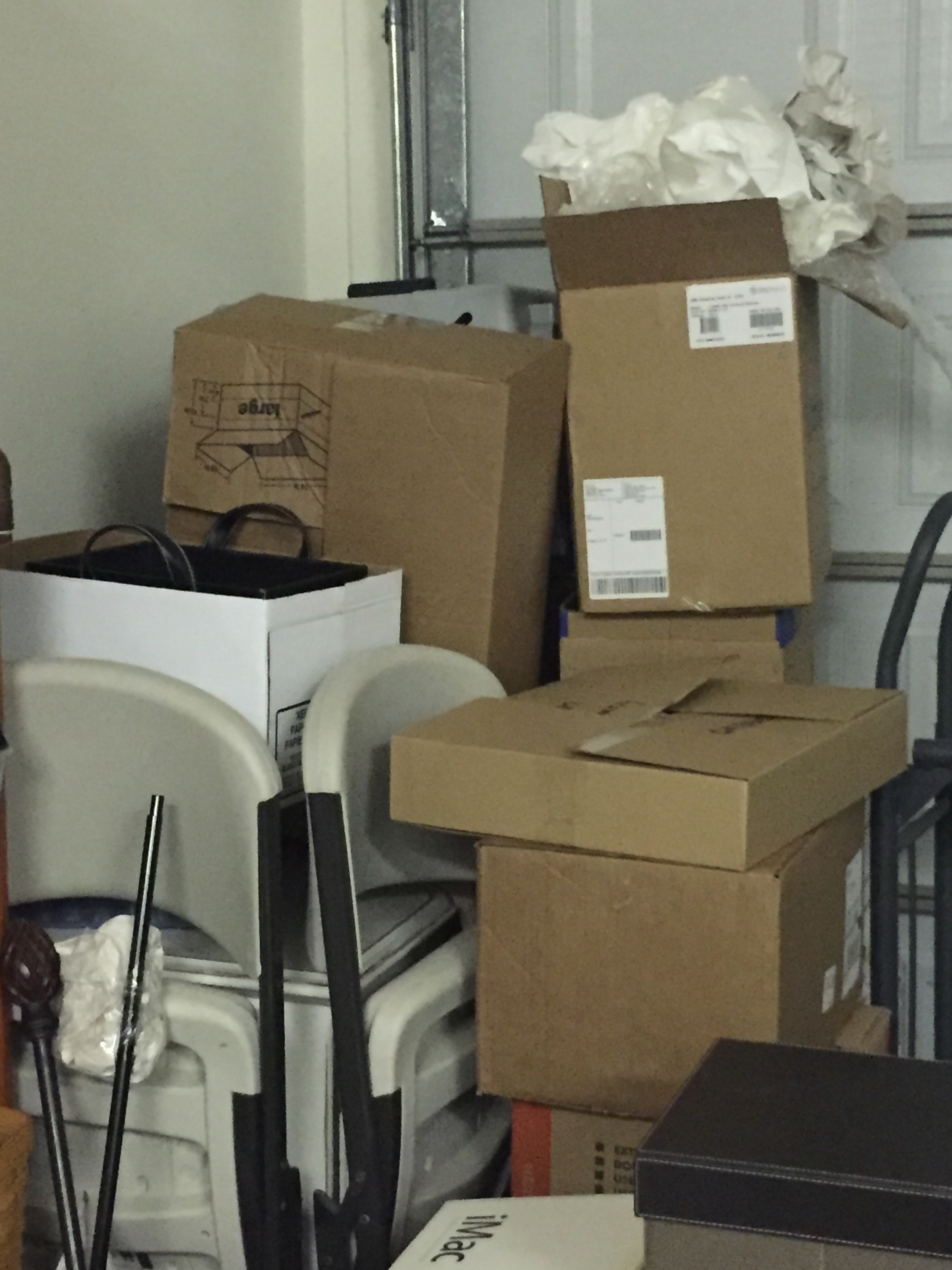Today, as I sit on my patio with my iced coffee listening to the birds, and the cars rushing past ma petite chateau, I am grateful. Grateful that I have all the packing and schlepping behind me, grateful for the end of the myriad of paperwork and intrusion into my personal life, and grateful for the opportunity to begin again in my own little corner of the planet.
Getting here was not easy and not for the faint of heart. But, it was just what I needed.
Have you considered relocating? Downsizing? Upsizing? Right sizing? Do you need to change your living arrangements due to a "change of circumstance?"
In February, I answered yes to right sizing and making the final move toward my independence. "Let's put the house on the market in June," I said. "Okay," he said.
You may have noticed that today is May 21. My taking it slow and easy plan looked great on paper, but ended up moving at warp speed!
I found a realtor who was aligned with my need to look first before listing the house. I wanted to be excited about this move. I was leaving the home where I had nurtured and raised my family, and where I had spent years developing a beautiful garden and bird sanctuary. I was leaving this all behind. I could take the memories with me, but not the visual peace of it all. And, this was a final goodbye to my married life.
Off I went to find a little place that I could afford near the new life I have built, where I could find peace, inspiration, and restoration. I found it sooner than expected and then sold the family home just as quickly. Blessings both, I know, along with the lessons learned through all of this.
Here's my checklist of do's and don'ts refined after recently practicing what I teach my clients.
1. Know what you can afford and stick to it. Prequalify for your home loan. Take a hard look at your expenses and budget for rent or for a mortgage.
2. Know what is most important to you. Can you give up an office space for a pretty patio garden? Bigger kitchen for a smaller than optimal living room? I found, "Loving The House You're In," by Paige Rein, to be insightful and helpful as I navigated my transition to a smaller home.
3. Interview more than one realtor and loan officer/broker and find a good fit for you. They will see the good, the bad, and the ugly sides of your temperament. They will also help to put the bumps and bruises of buying and selling into perspective.
4. Trust your gut.
5. Start decluttering long before you list your home. In fact, start now even if you aren't thinking about moving. Get rid of anything and everything that is weighing you down. If you don't use it, need it, or love it, let it go!
Recycle, repurpose, and share.
6. Not sure what you will need at the other end? Believe me when I say that I appreciate this. There comes a point in the moving process when you feel exhausted from the endless decision making. What remains will be boxed up and taken to your next home. The down side is that you will need to pick up where you left off at the other end.
7. To garage sale or not to garage sale, that is the question! If you have items that are probably not going to fit in your new residence, why pay a mover to do the heavy lifting when you are most likely going to let go of the overflow of furniture? A moving sale is win-win.
8. If you have friends and family who will drop everything to help you, then get on your knees and give thanks! And, don't forget to feed these angels well.
9. Hire movers for the heavy furniture and boxes of books.
10. Pace yourself or have your chiropractor on speed dial.
Set up a work space as soon as possible so that bills and paperwork don't overwhelm you.
11. Set up one bathroom and the essentials in the kitchen as soon as possible. You can't go wrong with a stash of chocolate, almonds, and iced cold Lacroix.
12. Have lots of cleaning supplies on hand.
Have a few of your favorite things in sight as you are moving in and unpacking.
13. Have I mentioned pets? This is where it gets tricky. I have two cats and a dog. They knew change was brewing and reacted with predictable behaviors. Having a place for pets to feel safe during the transition is paramount to everyone's happiness. Bring blankets and bedding that smell familiar to them.
14. Enjoy the process of moving in. It may feel good to "get it done," but some decisions need to simmer awhile and that's okay.
I have unpacked many boxes, cleaned every inch of my new home, helped my daughter paint her room, wallpapered my bedroom for whimsy, planted a little kitchen patio garden, and have clocked many, many, many steps along the way to settling in.
My pets have adjusted, I have found a beautiful path to walk my dog, and I just saw my first hummingbird. If you know me, you know this is a good omen!
My garage still holds many treasures and a growing donation pile. I brought more than I needed, but I do not regret it. I have found resourceful ways to repurpose some of my favorite things. The rest will be sorted one box at a time.
Moving to a new home is a change that I can live with and that I am embracing whole-heartedly. It is just what I need.


















